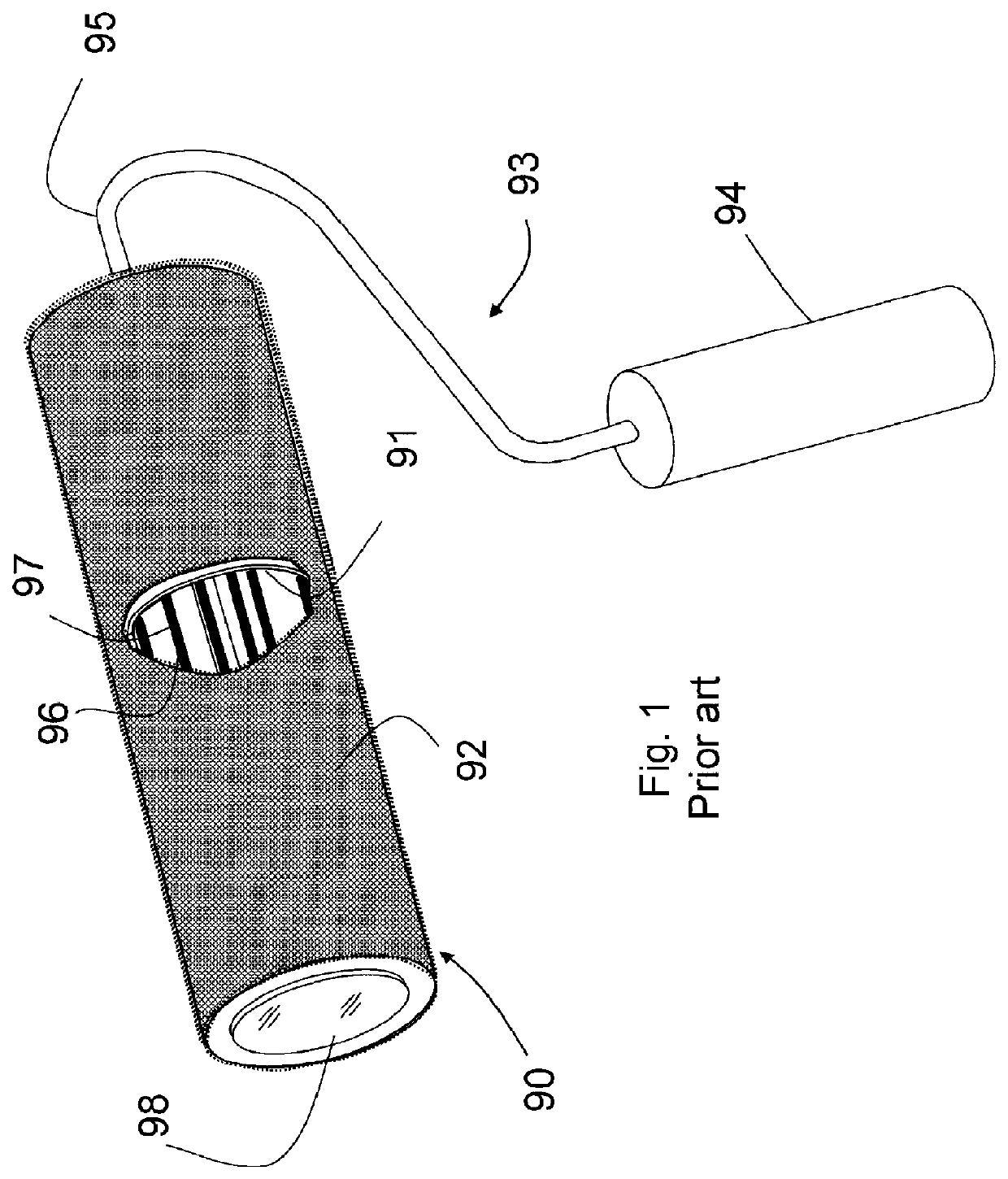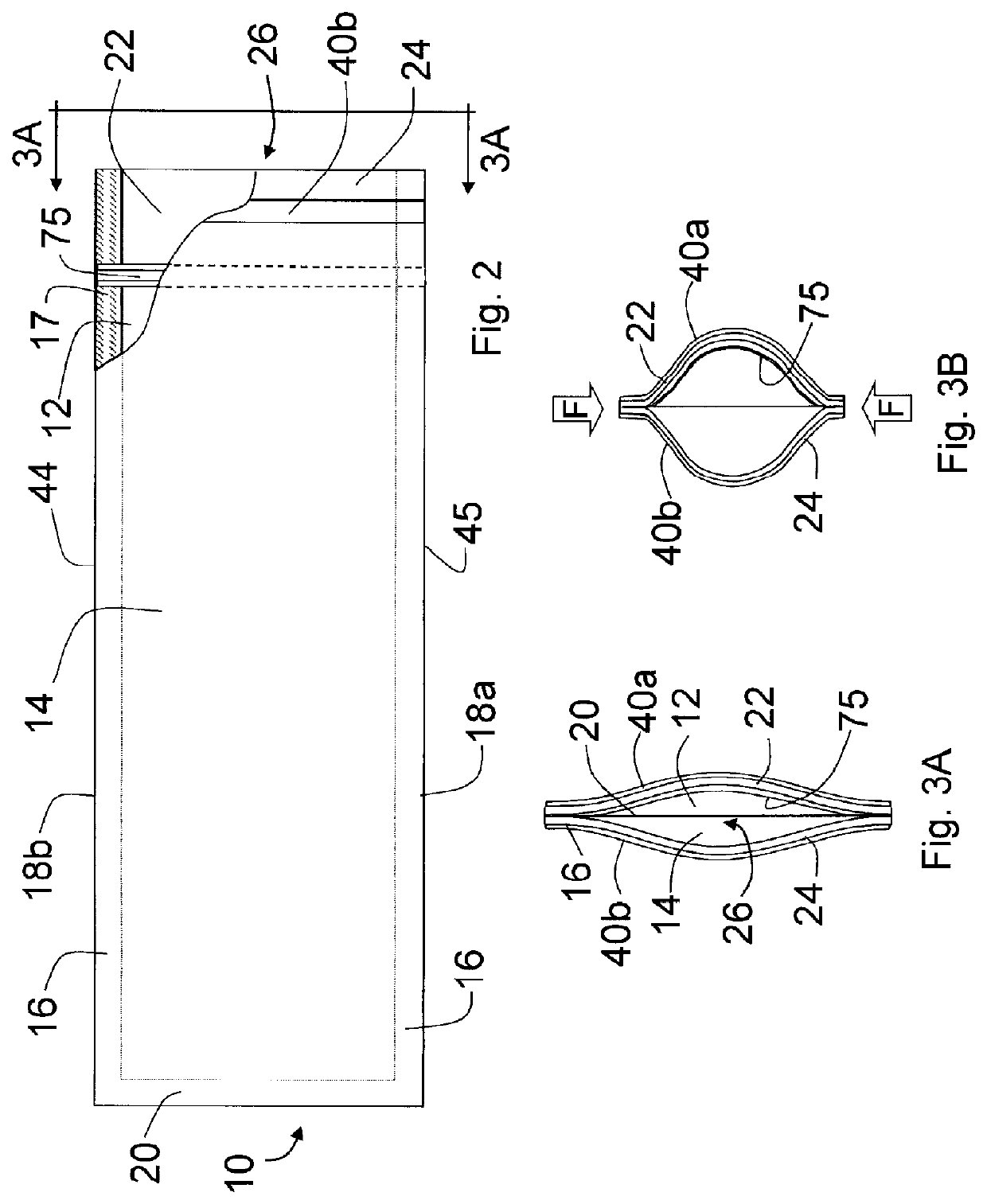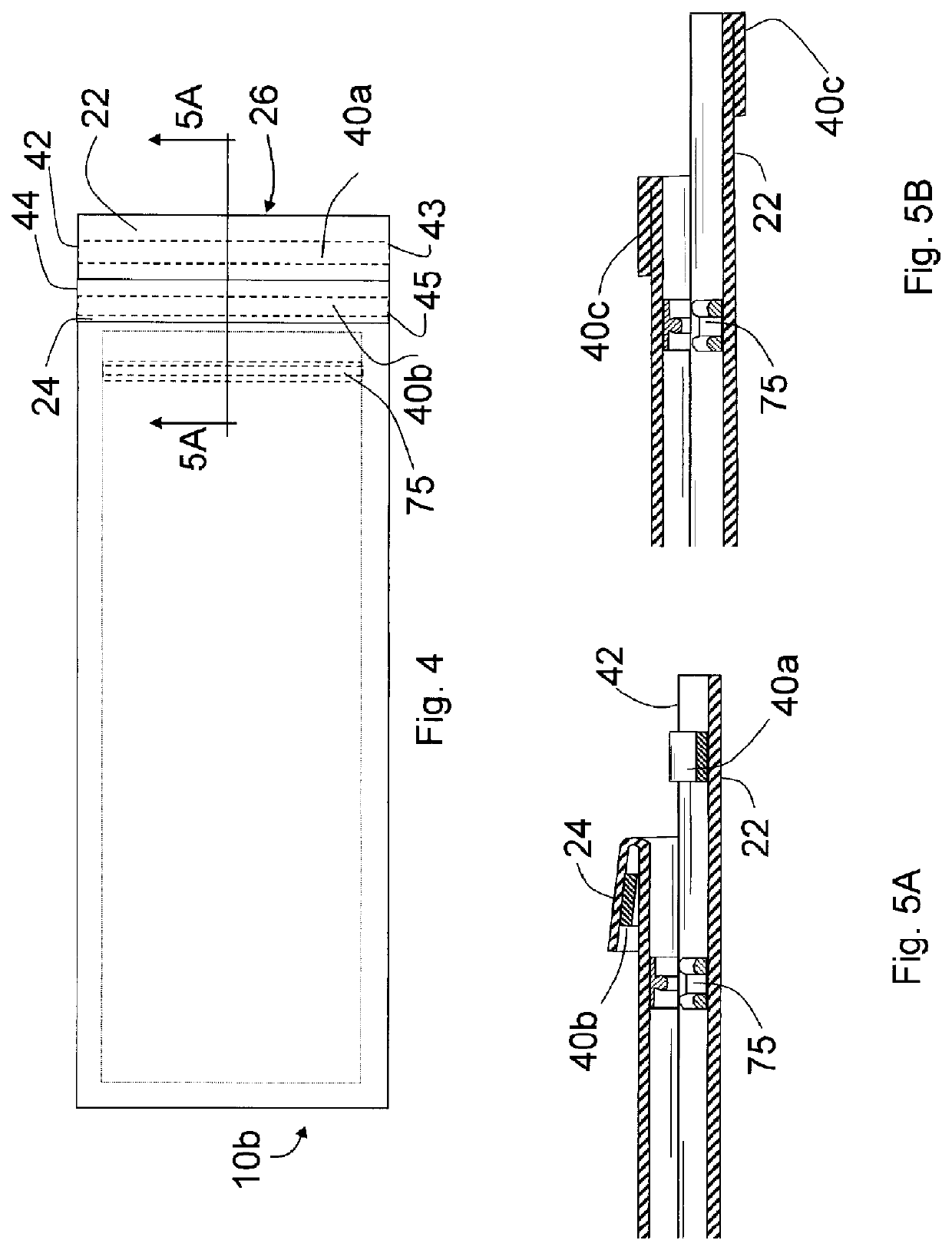Barrier device for storing a wet paint application device
a technology for storing and storing rollers, which is applied in the direction of flexible containers, sacks, packaging, etc., can solve the problems of generating undesirable cleaning by-products, expensive and wasteful cleaning of rollers after one use, and wasting time and money, so as to facilitate forming, convenient use, and convenient use
- Summary
- Abstract
- Description
- Claims
- Application Information
AI Technical Summary
Benefits of technology
Problems solved by technology
Method used
Image
Examples
examples
[0098]Samples of various films and sheets were prepared and tested for water vapor and solvent vapor transmission rates in accordance with the procedure for VTR disclosed above. The vapor transmission rates for water and mineral spirits are provided below in Table A.
[0099]Results are listed in grams / 100 square inches / 24 hours.
[0100]
TABLE A7-day Vapor Transmission Rates *Mineral Film Material sourceCategoryWaterspirits **Kibbles ® Foil LaminationFoil 0.0043 0.0028Clearlam ® Gloss MET PET MET PET 0.0308 0.0101Clearlam ® Matte MET PET MET PET 0.0423 0.0042Silver Frack Pack MET PET 0.0453 0.019Coffee—Metal InMET PET / LLD—Duralam MET PET 0.0342 0.0064Fruity Pebbles ® Box LinerHDPE-Nylon 0.0353 0.0001Ruffles ® PP / PE / METWPP MET PET 0.0001 0.0126Saran ® Wrap—40 gaPVDC 0.2041 0.0001Camera Overwrap Film SIOX PET 0.0306 0.007Orange Balloons—Met BONMET Nylon 0.3537 0.0135Silver Balloons—GlenroyMET Nylon 0.3537 0.0106Hormel ® 1 lb Classic BaconN-EVOH 0.5647 0.0179Blue Ribbon FootlongN-EVOH 0.5495...
PUM
| Property | Measurement | Unit |
|---|---|---|
| thickness | aaaaa | aaaaa |
| time | aaaaa | aaaaa |
| thick | aaaaa | aaaaa |
Abstract
Description
Claims
Application Information
 Login to View More
Login to View More - R&D
- Intellectual Property
- Life Sciences
- Materials
- Tech Scout
- Unparalleled Data Quality
- Higher Quality Content
- 60% Fewer Hallucinations
Browse by: Latest US Patents, China's latest patents, Technical Efficacy Thesaurus, Application Domain, Technology Topic, Popular Technical Reports.
© 2025 PatSnap. All rights reserved.Legal|Privacy policy|Modern Slavery Act Transparency Statement|Sitemap|About US| Contact US: help@patsnap.com



